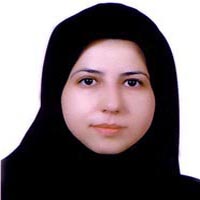Optimal methods for the preparation of fungal mycelium for examination with the scanning electron microscope
Plant-pathogenic fungi are considered a serious threat to world food security, causing spoilage in plant products and food poisoning. One of the ways to identify fungi is to examine their mycelium using a scanning electron microscope (SEM). In order to take high-resolution microscopic images and obtain the surface properties of mushroom mycelium samples, it is very important to prepare the samples, i.e. the method of dehydrating and drying them.
In this research, the effect of two dehydration methods and two drying methods on the mycelia of two fungi, Rhizoctonia solani and Rhizopus stolonifer, were compared to study them with SEM.
Microscopic observations showed that for R. stolonifer, dehydration with 100% ethanol and drying and for R. solani at room temperature and dehydration with 50% ethanol and the freezing method produce a smooth and high-resolution image compared to other methods.
Dehydration of fungal mycelium with 50% to 100% ethanol and drying at room temperature or freezing are the optimal methods to prepare them for examination with SEM and produce a smooth and high-resolution image, and the surface features of their mycelium are preserved and well-defined.
-
Synthesis, Characterization, and in Vitro Antifungal Activity of Solid Lipid Nanoparticles Containing Mentha×piperita L. Essential Oil
M. Vakili-Ghartavol, H. Arouiee*, S. Golmohammadzadeh, M. Naseri
Journal of Agricultural Science and Technology, May 2024 -
Hair-Regrowing Potential of Minoxidil Nanocrystal Structure versus Rosemary's Hydroethanolic Extract on C57BL/6 Mice
Ali Moradi, Seyed Morteza Seifati, Majid Darroudi *, , Mahmood Dehghani Ashkezari
Nanomedicine Research Journal, Winter 2024 -
The effect of Arghavan biofertilizer on physiological, biochemical and yield parameters of sweet pepper (Capsicum annum L.)
Masoumeh Vakili-Ghartavol, Khairullah Babaei, Musa AlReza Karimi
Journal of Plant and Biotechnology,



